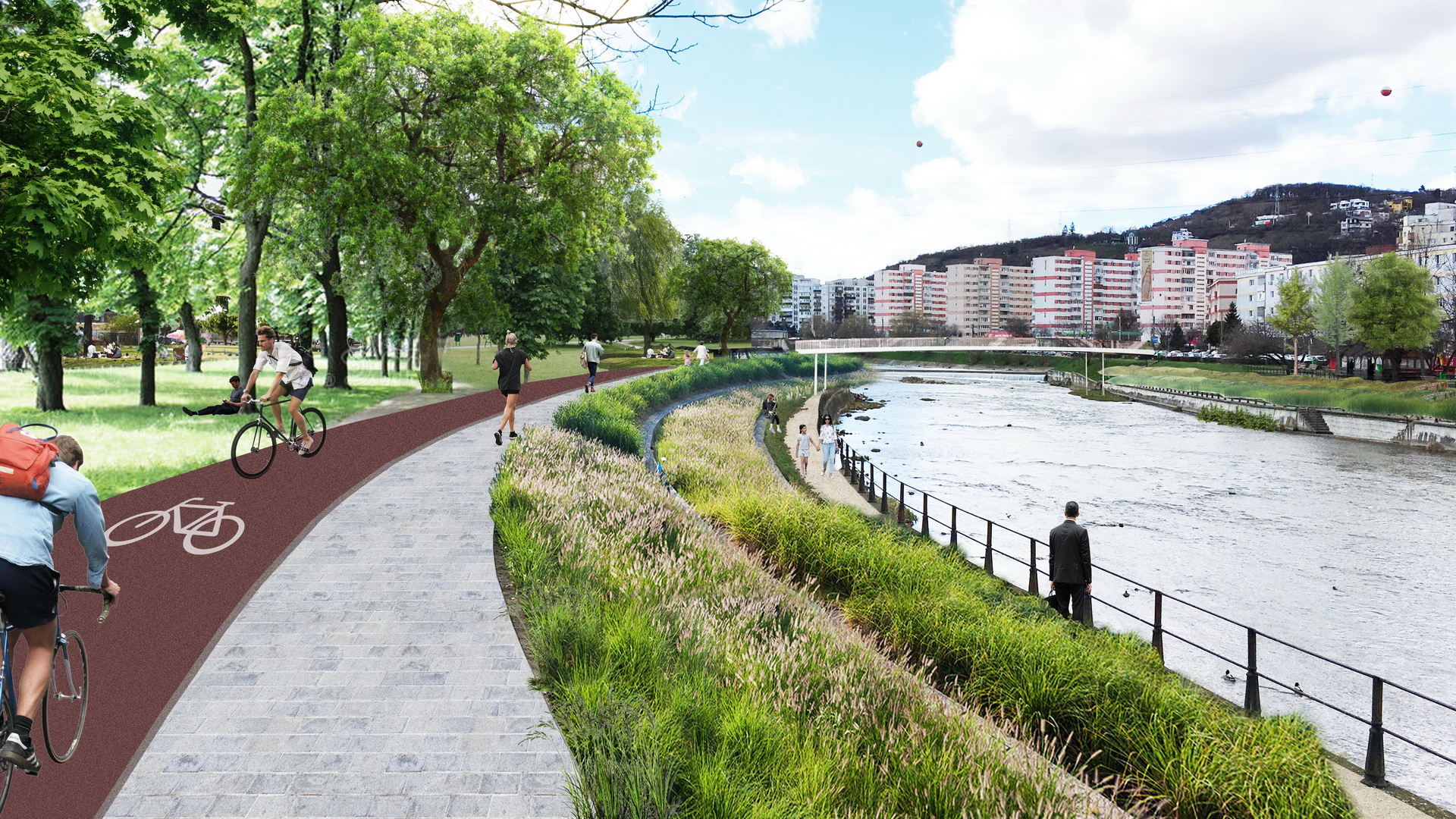Producing a diverse range of solutions to the varied conditions of the river Somes, this proposal reimagines the role of the river as it crosses through Cluj-Napoca for over 15 kilometers. The Somes River is no longer understood as a thin line that divides the city in half but rather as a thick band that is part of Cluj-Napoca, incorporating distinct ecological systems and integrating public space. The Somes is envisioned as an urban connector of public spaces and green areas as well as the primary circulation path for pedestrians and bicycles. Thus, this proposal aims to bridge that gap between the river and the city.

The conflictive relationship between the river and the city encouraged the beneficiary to rethink this relationship through an international urban and landscape design competition. This competition aimed to make evident the benefits of connecting the city and the river by conceptually reshaping the waterfront, highlighting the landscape and ecological value, proposing new means of using the water and riverbanks, identifying the vocation of this natural city axis to transform the public spaces which it crosses and inserting new programs in the neighborhood of the watercourse.
The project aims to enhance urban life in the main spine of Cluj Napoca and will be built with public funding. While the European Union will finance the implementation, additional support from the municipality of Cluj Napoca will be essential for the interventions that are not eligible for European funding

Producing a diverse range of solutions to the varied conditions of the river Somes, this proposal reimagines the role of the river as it crosses through Cluj-Napoca for over 15 kilometers.
The Somes River is no longer understood as a thin line that divides the city in half but rather as a thick band that is part of Cluj-Napoca, incorporating distinct ecological systems and integrating public space. The Somes is envisioned as an urban connector of public spaces and green areas as well as the primary circulation path for pedestrians and bicycles. Thus, this proposal aims to bridge that gap between the river and the city.
Firstly, a system of terraces expands the river’s edge and allows it to permeate into the urban fabric. As the river section is widened, the existing hard edge is transformed into a softer and more natural environment with the inclusion of local vegetation, rocks and sand. This system of terraces allows the river to become more accessible and incorporates areas for recreation where a diverse range of activities can unfold. Secondly, a system of longitudinal bicycle and pedestrian paths give continuity to the circulation routes along the river, currently fragmented, and allows the Somes to become the primary spine of movement throughout the city. Thirdly, a system of diagonal paths aims to stitch the river and its immediate context. These paths redefine the existing urban connections by extending them to the water’s edge, creating a visual, and physical, connection between the city fabric and the river.
Gala premiilor RBA este un eveniment de înaltă ținută, ce își propune să celebreze și să onoreze excelența în arhitectură. Evenimentul creează contextul propice de înțelegere a complexității manifestărilor arhitecturale actuale și de înțelegere a coeficientul de plus-valoare pe care arhitectura o aduce vieții urbane sau rurale contemporane.
Anul acesta evenimentul se va desfășura la București, în data de 18 aprilie 2019.